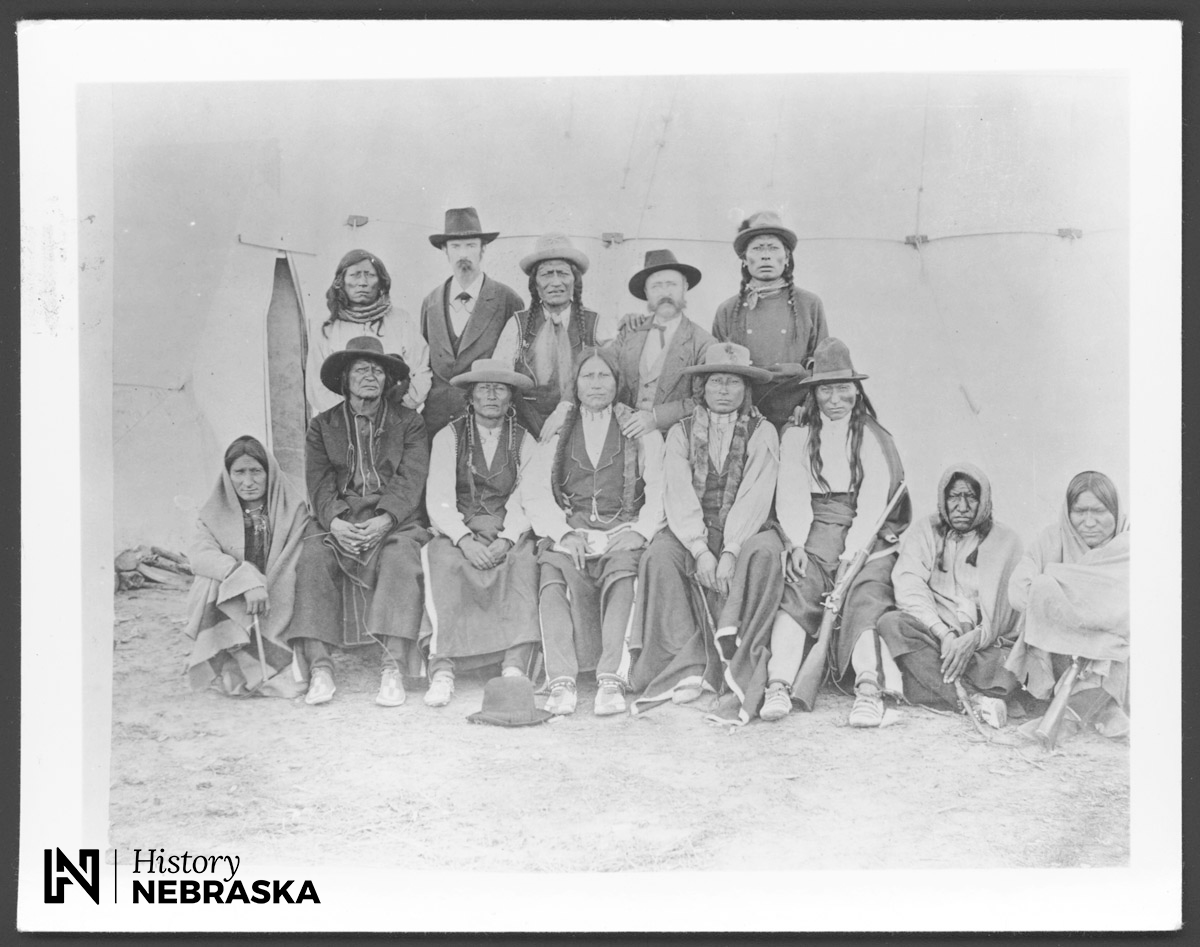A few short stops on the way to the Black Hills in the 1870s led to invaluable photos of the Red Cloud and Spotted Tail Indian Agencies.

Among the papers of Captain John G. Bourke in the History Nebraska archives is a collection of Indian portraits taken by D. S. Mitchell. These striking photographs, many printed as stereoscopic cards, depict prominent Oglala and Arapahoe leaders from the Red Cloud agency in northwestern Nebraska just after the close of the Sioux War of 1876-77. The famous Oglala chief Red Cloud is included, as are the lesser known Little Wound, Young Man Afraid of his Horses, and American Horse. “Capturing the Lakota Spirit, Photographers at the Red Cloud & Spotted Tail Agencies,” by Ephriam D. Dickson III, in the 2007 Spring/Summer issue of Nebraska History magazine, includes information on eight such photographers, including Mitchell, as well as reproductions of their famous photographs.
Born in 1838 in York County, Maine, Daniel Sedgley Mitchell began his photographic career as an errand boy in a daguerreotype gallery at the age of nine. During his early years he worked in a number of photographic galleries before going West about 1874. By January 1876 he had established a studio in Cheyenne, the capital of Wyoming Territory and an important jumping-off point for the Black Hills. He soon moved to the Hills, arriving in Deadwood in June where he was reported to be taking excellent views of the scenery. He returned to Cheyenne in October but left again in the spring of 1877 with another photographer, Joseph H. McGowan. The two moved from town to town along the Union Pacific Railroad, setting up a temporary tent studio to produce portraits of townspeople and area views. He probably traveled to the Red Cloud Agency some time in September or October 1877.
In the spring of 1878 Mitchell and McGowan located permanently in Omaha, where they published three sets of views: Mitchell’s Indian portraits, taken at the Red Cloud Agency; his earlier Black Hills views; and a third series by photographer-soldier Charles Howard. The partnership of Mitchell, McGowan and Co. (possibly with Howard as a partner) dissolved in the fall of 1878, when Joseph McGowan moved to North Platte and Howard was transferred to Fort Sanders, Wyoming. Mitchell then opened the Bee Hive Studio in Omaha, in partnership with May J. Cannell, whom he later married. He next opened a studio in Norfolk, then one in Galesburg, Illinois, and finally in 1889, moved to Guthrie, Oklahoma Territory, where he produced an important photographic series of the land rush. Mitchell died in Guthrie in 1929.
While Mitchell’s negatives have not survived, a number of his original prints are known. The largest single collection of his Indian portraits was preserved by Captain John G. Bourke, longtime aide to General George Crook. They are now distributed among History Nebraska, the Smithsonian Institution, and the U.S. Military Academy at West Point.



